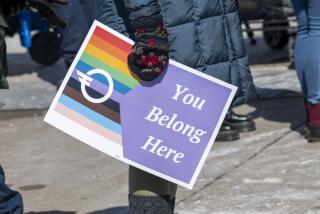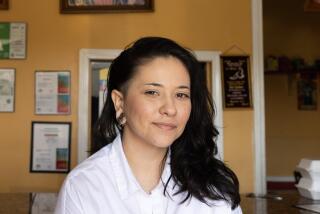THE TIMES POLL : Happiness Not Tied Strongly to Religion : Environment: Most people say they are satisfied with their lives. But those who attend church are less likely to be dissatisfied.
- Share via
Are religious feelings associated with greater happiness?
Not necessarily, according to The Times Poll.
A San Fernando Valley survey found that most people voiced satisfaction with their lives and communities regardless of the importance of religion to them.
Among those who say religion is important to them, about four-fifths, 82%, say they are generally happy with their lives, and 15% are dissatisfied. The proportions are about the same among those who say religion is not important, 76% to 21%.
As for community life, two-thirds of those for whom religion is important are satisfied, while 58% of those who regard religion as unimportant are content. Membership in a congregation seems to make little difference: Community life is rated satisfying by 64% by members and by 67% of non-members.
“The poll doesn’t reveal any real strong relationship between religiosity and satisfaction,” said John Brennan, director of The Times Poll.
He noted that churchgoers are less likely to express dissatisfaction with life. One-fourth of those who never attend services said they are dissatisfied, compared with only 9% of those who attend weekly or more.
On the other hand, three-fourths of those who never attend said they are still basically happy with their lives.
The Valley survey showed that only 39% of residents belong to religious congregations, a lower figure than national percentages, and that 20% claim to identify with no religion--twice the number in national polls.
But there were hopeful signs for organized religion.
Spiritual inclinations are growing somewhat among Jews and non-Catholic Christians. Nearly one of every three Jewish respondents said they have become more religious in the last decade, while only 11% said they’ve grown less religious. Among non-Catholic Christians, a third reported increased religiosity and only 9% indicated their faith has waned.
Nonetheless, most people, regardless of faith, say their interest in religion is unchanged over the last 10 years, and the number of Catholics who have grown more religious is equaled by ones who have become less religious.
Asking about “the quality of your religious experiences,” the poll found that just less than half of non-Catholic Christians (48%) said they were very satisfied, while fewer Catholics (40%) and Jews (33%) expressed that degree of satisfaction. Much bigger majorities in each group felt at least somewhat satisfied.
“Pastors and rabbis will be happy to know that 60% of congregation members are very happy with their religion but might want to pay more attention to the 31% who are somewhat satisfied,” Brennan said. “Just 7% of members are dissatisfied, however.”
Young adults between 18 and 24 appear to be the most contradictory age group in religious attitudes. They are slightly higher in church attendance than older people and more than other adults they tend to believe in the devil, life after death, reincarnation and the Bible as the actual or inspired word of God.
At the same time, young adults in the Valley also have the highest percentage claiming no religion, about three in 10.
Six in 10 Valley households with children have a child in public school; just 15% send one or more to a religious school, and 9% have children in secular private schools. That is a slightly higher level of private school attendance than The Times Poll measured in California in May, 1991. In that poll, 64% of those with children at home had someone in a public school while 16% had a child in a private or parochial institution.
Nineteen percent of Anglo households with children at home have one enrolled in a religious school; for Latinos, the comparable figure is under one in 10.
Being close to a preferred place of worship was generally described as not important to Valley residents when they decided where to live. Overall, only 23% said it was important, and Latinos were more likely to say that (34%) than were Anglos (18%), as were people with children at home (30%) and those who attend services weekly.
Religious leaders have often debated whether different faith allegiances in families lead to less religious practice overall. The net movement in the Valley’s population has been toward homes split by denomination. Three out of four Valley residents were raised in a family where everyone practiced the same religion. Just 21% came from multi-denominational households. Although a 58% majority of Valley households have just one religion now, the number of homes that currently have more than one denomination is 36%.
The survey found that those from single-denomination households are somewhat more likely than those in mixed denominational homes to find religion very important (53% versus 43%), to belong to a congregation (45% versus 36%) and to attend weekly services (31% versus 24%).
But the differences are far from overwhelming. Nor does the split religious outlook seem to have a major negative effect on overall life satisfaction. Eighty-two percent of those from single-religion households say they’re generally satisfied with their lives, while 15% are unhappy. Among people from mixed-religion homes, those numbers are identical.
More to Read
Sign up for Essential California
The most important California stories and recommendations in your inbox every morning.
You may occasionally receive promotional content from the Los Angeles Times.










